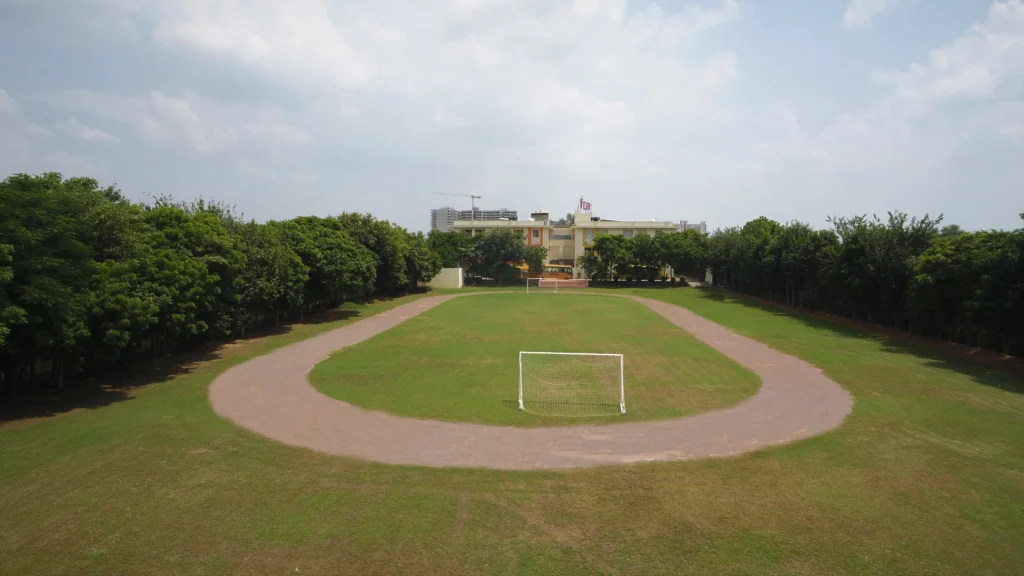Environmental sustainability is more than an option in the quickly evolving world of today; it is a need. Schools have a vital role to play in fostering environmentally sensitive ideals since they are institutions that shape future generations. In addition to helping to preserve the environment, building green and eco-friendly school infrastructure makes learning environments healthier and more motivating. Eco-friendly design, building, and daily operations are all incorporated into sustainable schools.
Schools can lessen their environmental impact, cut operating expenses, and encourage a sustainable culture among students by investing in green infrastructure. Building a future based on ecological stewardship requires this dedication.
- Teaching about the Environment:
Green schools use exercises like gardening, energy audits, and nature excursions to include sustainability into the curriculum. These practical exercises foster critical thinking, environmental consciousness, and a greater respect for sustainability and the natural world.
- Student Welfare:
It has been demonstrated that having access to outdoor green spaces, natural light, and fresh air improves mood, focus, and general wellness. In addition to improving staff and student mental and physical health, a clean, green school environment lowers absenteeism.
- Conserving Water:
Rainwater harvesting systems are used in green schools to collect and store water for toilets and irrigation. In addition to drastically reducing water consumption, drought-tolerant landscaping plants and low-flow toilets and faucets educate kids about sustainable water use.
- Management of Waste:
By placing containers with clear labels and minimizing single-use plastics, schools promote recycling and composting. By teaching students how to correctly sort waste and repurpose items, several schools set zero-waste objectives and help students develop lifelong environmental responsibility behaviors.
- Eco-Friendly Design:
The goal of eco-friendly school design is to optimize natural light, ventilation, and temperature regulation. Large windows, skylights, and cross-ventilation are some features that make learning environments more comfortable and energy-efficient by reducing the need for artificial lighting and air conditioning.

- Sustainable Materials:
Sustainable materials including bamboo, reused wood, recycled steel, and non-toxic paints are used in green school structures. These materials serve the environment and the health of students by reducing production-related environmental harm and enhancing indoor air quality.
- Efficiency of Energy:
Installing motion-sensor systems, LED lighting, and solar panels helps schools use less energy. Real-time consumption monitoring by smart energy management technologies helps schools save money and lessen their carbon impact while preserving productive learning settings.
- Living walls and green roofing:
Installing vegetated living walls or green roofs can absorb carbon dioxide, lower the urban heat island effect, and insulate structures. Additionally, these features offer experiential learning areas for ecology and botany classes.
- Eco-Friendly Transportation:
By providing amenities like bike racks, secure walking routes, and dedicated drop-off locations, eco-friendly schools encourage bicycling, walking, and carpooling. To cut down on transportation-related pollution, some schools also purchase electric school buses.
- Sustainable Cafeterias:
Schools can reduce their environmental impact by offering locally sourced, organic meals and minimizing food waste. Composting kitchen scraps and avoiding disposable utensils further contribute to a greener campus.
Building eco-friendly and green school facilities is an investment in a sustainable future. It creates ecologically conscientious citizens in addition to lessening the environmental effect of educational institutions. Schools can greatly reduce their environmental impact by implementing eco-friendly materials, water-saving techniques, and energy-efficient technology. By incorporating sustainability into the classroom, educators can make sure that children acquire the values and knowledge needed to preserve the environment.
In the end, green schools are more than simply structures; they are living laboratories that set an example for future generations to follow and encourage them to take charge of their education with responsibility, care, and a dedication to a sustainable world.
Vega Schools offers holistic education to children in Delhi NCR and is rated among the top Schools in Gurgaon. Its modern infrastructure, facilities, and experienced teachers are a big asset to the learning & development of students, be it for Nursery, Primary or Senior children making Vega Schools the best schools in Gurgaon. For information about admission please visit the Vega Schools campuses in Sector 48 and Sector 76 Gurugram.
